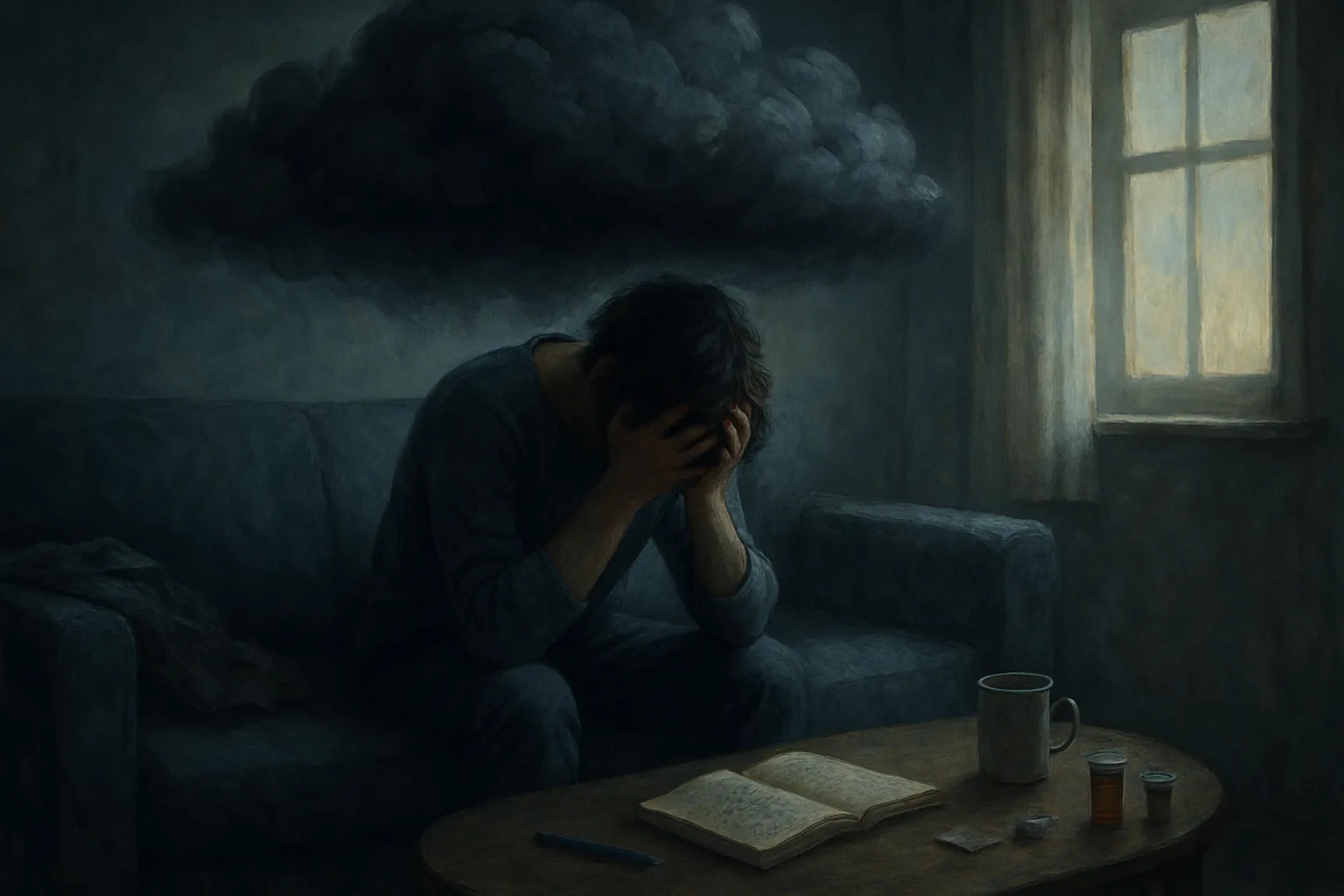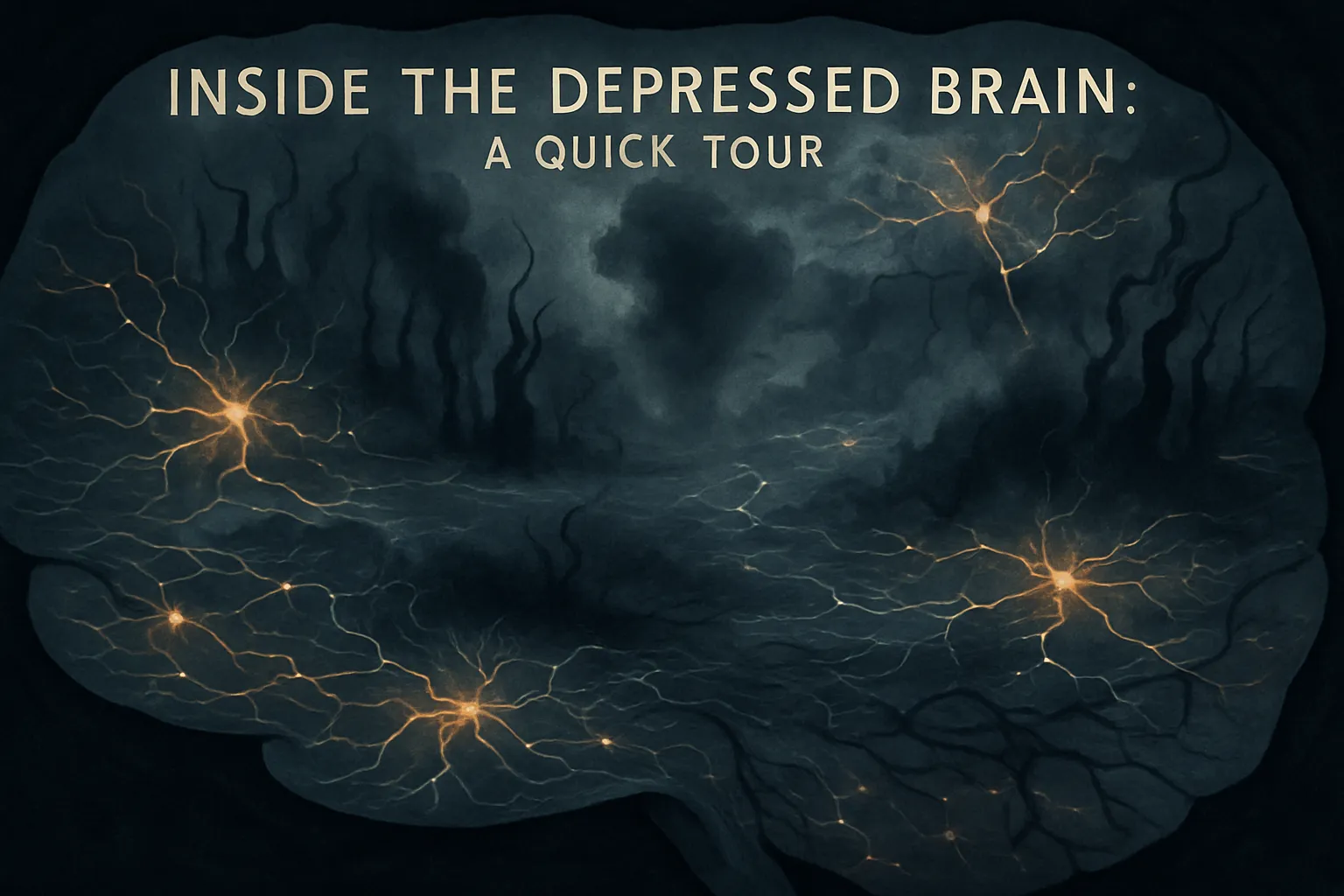A rainy day once knocked me flat. Not literally, but emotionally—I didn’t get out of bed until noon. At the time, I figured it was just a bout of the blues. But when I tried to comfort a friend who had depression with ‘cheer up, it gets better,’ I realized I was missing something bigger. Depression isn’t simply about feeling down; it’s a complex, far-reaching condition with serious real-world consequences. Let’s unravel what’s really going on when someone says, 'I’m depressed.'
Beyond Blue: What Sets Clinical Depression Apart
I used to think I understood depression. I’d have a rough day, feel down, and say, “I’m so depressed.” But it wasn’t until I watched a close friend struggle with clinical depression that I realized how different it is from everyday sadness. The confusion between depression vs sadness is common, but the differences are crucial—especially when it comes to recognizing the signs of depression and knowing when to seek help.
Everyday Sadness vs Clinical Depression: The Key Differences
Almost everyone feels sad from time to time. Maybe you get a bad grade, lose a job, or have a fight with someone you love. Sometimes, sadness just shows up for no clear reason. Usually, these feelings are temporary. They fade as circumstances change or as time passes. You might feel blue for a few hours or even a couple of days, but eventually, the cloud lifts.
Clinical depression, on the other hand, is a different experience entirely. It’s not just a mood that comes and goes. It lingers—often for weeks, months, or even longer. According to mental health experts, depression is the leading cause of disability worldwide. In the United States alone, nearly 10% of adults struggle with depression. Yet, because it’s a mental illness and not something you can see on an X-ray or a blood test, it’s often misunderstood.
How Long Is Too Long? Duration and Intensity Matter
The first major sign that you’re dealing with more than just sadness is how long the feelings last. For a diagnosis of clinical depression, symptoms must stick around for at least two weeks. But it’s not just about time—it’s about intensity and impact, too. Depression doesn’t just make you sad; it can disrupt your ability to work, enjoy hobbies, or even get out of bed.
- Everyday sadness: Fleeting, usually tied to a specific event, and doesn’t stop you from living your life.
- Clinical depression: Persistent, often without a clear trigger, and interferes with work, play, and relationships.
Clinical Depression Symptoms: More Than Just Feeling Down
One of the biggest misconceptions is that depression is just about feeling sad. In reality, the signs of depression are wide-ranging and can affect your mind, body, and spirit. As one expert puts it:
“Depression can have a lot of different symptoms. A low mood, loss of interest in things you’d normally enjoy, changes in appetite, feeling worthless...”
To be diagnosed with clinical depression, a person must have at least five of the following symptoms, nearly every day, for at least two weeks:
- Persistent low mood or sadness
- Loss of interest or pleasure in activities
- Significant changes in appetite or weight
- Sleep problems—either insomnia or sleeping too much
- Physical fatigue or loss of energy
- Feelings of worthlessness or excessive guilt
- Difficulty concentrating or making decisions
- Restlessness or slowed movements
- Recurring thoughts of death or suicide
It’s important to note that not everyone experiences all these symptoms, and some people may have symptoms that are more physical than emotional. For example, some people feel aches and pains, while others lose their appetite or can’t sleep.
Why Clinical Depression Is a Medical Disorder
Here’s what really sets clinical depression apart: it’s a diagnosable medical condition, not just a bad mood. You can’t simply “cheer up” or “snap out of it.” The symptoms persist even when life seems to be going well. In fact, sometimes there’s no obvious reason for the depression at all—it just appears, “out of the blue,” and refuses to leave.
This is why depression is so often misunderstood. People may say, “Just think positive!” or “Things will get better soon,” not realizing that clinical depression is a serious health issue. It’s as real as high cholesterol or diabetes, and it deserves the same level of care and support.
Impact on Life: More Than a Mood
The impact of clinical depression goes far beyond mood. It can derail work, strain relationships, and make even simple tasks feel impossible. For many, it’s a daily struggle just to get through the basics—eating, sleeping, and connecting with others. That’s why understanding the difference between depression vs sadness is so important. Recognizing the signs of depression can be the first step toward real help and healing.

Inside the Depressed Brain: A Quick Tour
When I first learned that depression could physically change the brain, it felt like a lightbulb moment. For so long, I’d heard people say, “It’s all in your head.” But it turns out, that’s true in a way they never meant—depression actually leaves its mark on the brain itself. Let’s take a quick tour inside the depressed brain and see what science has uncovered about brain changes depression brings.
Seeing Depression: Brain Scans and Physical Changes
Imagine if you could look at the brain with x-ray vision. Scientists have done just that with brain scans, and what they’ve found is striking. As one expert put it:
"First of all, there are changes that could be seen with the naked eye and x-ray vision. These include smaller frontal lobes and hippocampal volumes."
In people with clinical depression, the frontal lobes—the part of the brain that helps us make decisions, plan, and control our emotions—are often smaller than average. The hippocampus, which is key for memory and learning, also tends to shrink. These aren’t just tiny changes; they’re measurable differences that show up on MRI scans. It’s a powerful reminder that depression isn’t just about feeling sad—it’s about real, physical changes in the brain.
Neurotransmitters: The Brain’s Chemical Messengers
But the story doesn’t end with what we can see. On a microscopic level, depression is tied to changes in the chemicals that help brain cells talk to each other. These chemicals, called neurotransmitters, include:
- Serotonin – Often called the “feel-good” chemical, it helps regulate mood, sleep, and appetite.
- Norepinephrine – Involved in alertness and energy, it also plays a role in stress response.
- Dopamine – Linked to motivation, pleasure, and reward.
In depression, these neurotransmitters can get out of balance. Sometimes there’s too little, sometimes the brain isn’t responding to them properly. This imbalance is one reason why medications that target these chemicals can help some people with clinical depression symptoms.
Sleep, Hormones, and the Body’s Clock
Another thing I’ve noticed, and many others with depression report, is how sleep gets out of whack. Science backs this up. Depression often disrupts the body’s circadian rhythms—our internal clock that tells us when to sleep and wake. People with depression might have trouble falling asleep, staying asleep, or might sleep too much. REM sleep, the stage when we dream, can also be affected, sometimes coming on too early or lasting longer than usual.
Hormones are another piece of the puzzle. Cortisol, known as the “stress hormone,” is often higher in people with depression. This isn’t just a small bump—some studies show it can be chronically elevated, putting extra strain on the body. Thyroid hormones, which help regulate energy and mood, can also be out of balance. These biological markers are more than just numbers on a lab test; they’re clues to what’s happening inside the depressed brain.
Why Is This Happening? The Complex Causes of Depression
With all these changes—smaller brain regions, chemical imbalances, disrupted sleep, and hormone shifts—you might wonder: what causes it all? The truth is, science hasn’t found a single answer. Genetics play a role; if depression runs in your family, your risk is higher. But environment matters too—stress, trauma, and even chronic illness can trigger these brain changes. It’s a complex dance between our genes and our experiences.
What’s clear is that depression isn’t just emotional. It’s a condition with real, physical roots. That’s why mental health support is so important—not just for the mind, but for the brain and body too. Understanding these brain changes helps us see depression for what it really is: a multifaceted illness that deserves compassion, treatment, and ongoing research.

Reaching Out: Why Support Makes All the Difference
When I first learned that, on average, it takes someone over ten years to reach out for help with a mental illness, I was stunned. Ten years is a long time to carry something as heavy as depression alone. According to the National Institute of Mental Health, “it takes the average person suffering with a mental illness over ten years to ask for help, but there are very effective treatments.” That statistic has stuck with me, and it’s changed the way I think about helping someone with depression and the power of mental health support.
I remember a close friend of mine who struggled quietly for years. She always seemed to be “just tired” or “going through a rough patch.” It wasn’t until she opened up to me that I realized how deep her pain went. Even then, she hesitated to seek help—she worried about what people would think, and she felt ashamed for not being able to “snap out of it.” Her story isn’t unique. Stigma and misunderstanding keep so many people silent, even when effective treatments for depression are within reach.
The good news is that there are more options for treatment than ever before. Medications and therapy can work together to boost the brain chemicals that affect mood, and for some people, these approaches are life-changing. In more severe cases, treatments like electroconvulsive therapy (ECT)—which involves a carefully controlled seizure in the brain—can offer relief when nothing else has worked. There are also promising new treatments, like transcranial magnetic stimulation (TMS), which uses magnetic fields to stimulate certain areas of the brain. Researchers are still learning about how these treatments can help, but the message is clear: hope is real, and recovery is possible.
But here’s something I’ve learned from both research and personal experience: even the best treatments can seem out of reach when you’re in the depths of depression. The first steps—finding a therapist, making an appointment, even just admitting you need help—can feel impossible. That’s where support makes all the difference. If you’re helping someone with depression, sometimes the most powerful thing you can do is offer to help with practical tasks. I’ve sat with friends while they called a doctor, helped them look up therapists in the area, or made a list of questions to ask at their first appointment. These small acts can be a lifeline.
It’s also important to talk openly and honestly about depression. Shame and stigma thrive in silence. When we have real conversations—yes, even the uncomfortable ones—we break down the walls that keep people from seeking help. If someone you care about feels guilty or weak for struggling, remind them that depression is a medical condition, not a character flaw. I often compare it to something like asthma or diabetes: you wouldn’t expect someone to “just get over” those conditions, and depression is no different. Avoid saying things like, “I’ve felt sad too, you’ll get over it.” Comparisons like that only add to the guilt and make it harder for someone to reach out.
One of the most important things I’ve learned is that talking about suicidal thoughts does not increase the risk—it actually reduces it. Open, caring conversations can be lifesaving. If you’re worried about someone, ask them directly how they’re feeling. Listen without judgment, and let them know you’re there for them, no matter what.
Depression is more than just feeling sad. It’s a real, medical condition that deserves real, compassionate support. If you or someone you know is struggling, remember that help is out there—and that reaching out, even in small ways, can make all the difference. Let’s not make anyone wait ten years to find hope. Let’s be the support that helps them take the first step toward healing.
TL;DR: Depression goes way beyond ordinary sadness, affecting millions and altering lives. Understanding the difference, recognizing symptoms, and supporting those who suffer can make all the difference. Seeking support isn’t weakness—it’s a step toward healing for anyone affected.



